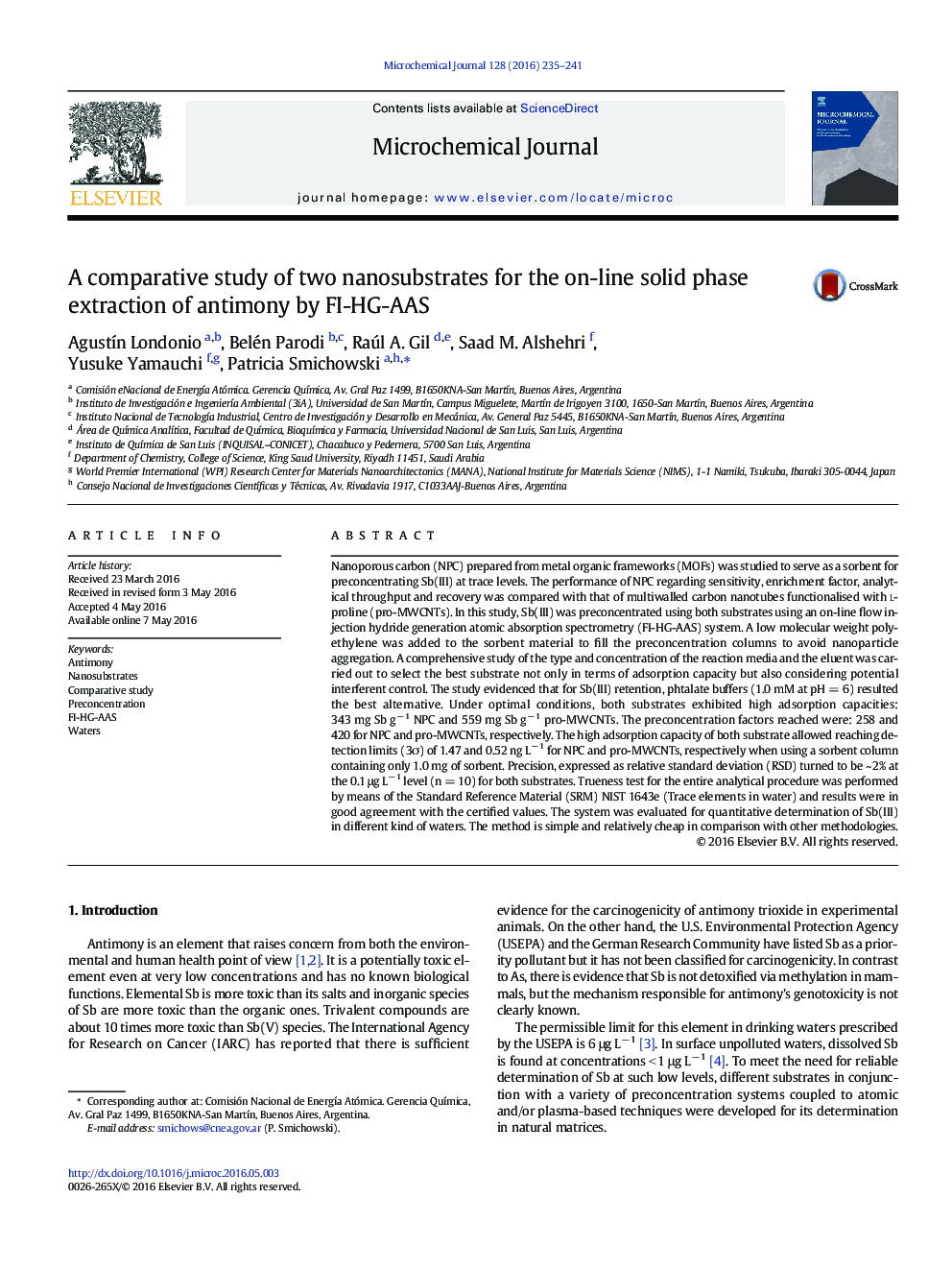| Article ID | Journal | Published Year | Pages | File Type |
|---|---|---|---|---|
| 1227562 | Microchemical Journal | 2016 | 7 Pages |
•Pro-MWCNTs and nanoporous carbon (NPC) as two efficient substrates for Sb(III) preconcentration•Column design is crucial to obtain a high preconcentration efficiency.•The mixture of the substrates with a low molecular weight polyethylene avoids nanosubstrate agglomeration.•High preconcentration factors reached: 258 and 420 for NPC and pro-MWCNTs, respectively.•Sb(III) was detected at ng L− 1 levels with only 1.0 mg of substrate.
Nanoporous carbon (NPC) prepared from metal organic frameworks (MOFs) was studied to serve as a sorbent for preconcentrating Sb(III) at trace levels. The performance of NPC regarding sensitivity, enrichment factor, analytical throughput and recovery was compared with that of multiwalled carbon nanotubes functionalised with l-proline (pro-MWCNTs). In this study, Sb(III) was preconcentrated using both substrates using an on-line flow injection hydride generation atomic absorption spectrometry (FI-HG-AAS) system. A low molecular weight polyethylene was added to the sorbent material to fill the preconcentration columns to avoid nanoparticle aggregation. A comprehensive study of the type and concentration of the reaction media and the eluent was carried out to select the best substrate not only in terms of adsorption capacity but also considering potential interferent control. The study evidenced that for Sb(III) retention, phtalate buffers (1.0 mM at pH = 6) resulted the best alternative. Under optimal conditions, both substrates exhibited high adsorption capacities: 343 mg Sb g− 1 NPC and 559 mg Sb g− 1 pro-MWCNTs. The preconcentration factors reached were: 258 and 420 for NPC and pro-MWCNTs, respectively. The high adsorption capacity of both substrate allowed reaching detection limits (3σ) of 1.47 and 0.52 ng L− 1 for NPC and pro-MWCNTs, respectively when using a sorbent column containing only 1.0 mg of sorbent. Precision, expressed as relative standard deviation (RSD) turned to be ~ 2% at the 0.1 μg L− 1 level (n = 10) for both substrates. Trueness test for the entire analytical procedure was performed by means of the Standard Reference Material (SRM) NIST 1643e (Trace elements in water) and results were in good agreement with the certified values. The system was evaluated for quantitative determination of Sb(III) in different kind of waters. The method is simple and relatively cheap in comparison with other methodologies.
